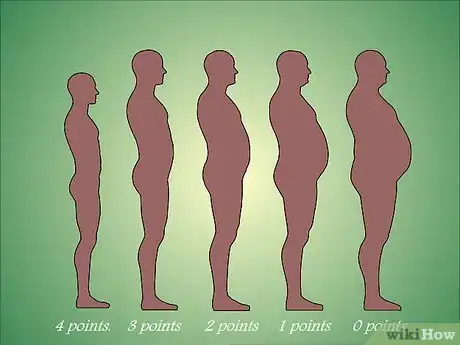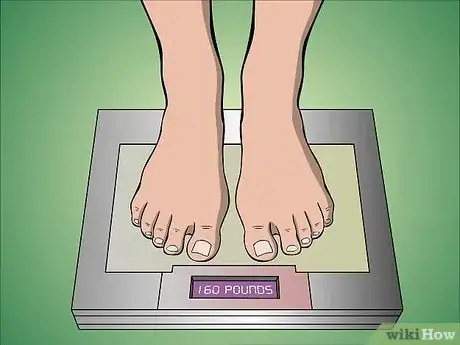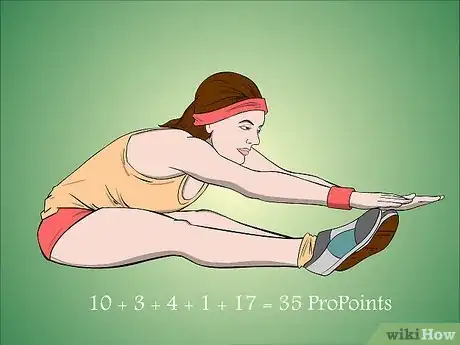wikiHow is a “wiki,” similar to Wikipedia, which means that many of our articles are co-written by multiple authors. To create this article, 14 people, some anonymous, worked to edit and improve it over time.
This article has been viewed 612,926 times.
Learn more...
Weight Watchers is an international company that offers diet plans and products to customers, and bases weight loss on the concept of allotting points for food. The system is designed with the idea that each portion of food is assigned points for the types of calories it contains. A meal low in fat and high in protein would be assigned lower points, while one higher in fat would be assigned higher points. The idea is to reach a balance of nutrition while not exceeding daily maximum points. To work out your Weight Watchers daily points allowance, use the following steps.[1]
Steps
Calculating Your Allowance
-
1Determine your baseline. Weight Watchers calculates a base for you to begin with. This base starts with your gender.
- Males: Allow yourself 8 points.
- Females: Allow yourself 2 points.
- Nursing females: Give yourself 10 points to account for the extra calories needed to sustain your child.
-
2Account for your age. As we get older, our metabolism slows down. To account for this, Weight Watchers factors the age difference of clients into the total allowance.
- Ages 17 to 26: Add 4 points.
- Ages 27 to 37: Add 3 points.
- Ages 38 to 47: Add 2 points.
- Ages 48 and 57: Add 1 point.
- Age 58 and older: Add 0 points.
Advertisement -
3Consider your level of activity or exercise. How much and with what intensity you exercise has a huge difference on how many calories we burn. Factor your level of exercise into your ProPoints allowance.
- Heavy exercise (such as working out more than 30 minutes per day or doing manual labor each day): Add 6 points
- Moderately activity (such as walking throughout the workplace all day or doing 30 minutes of exercise daily): Add 4 points.
- Low activity (such as standing or moving throughout an office): Add 2 points.
- Inactivity: Add 0 points.
-
4Add your height to your base and age points. Much like calculating BMI, this will allow you to reach your total points once weight is added as well.
- 155 cm (5 feet, 1 inch) and shorter: Add 0 points.
- 155 cm (5 feet, 1 inch) to 178 cm (5 feet, 10 inches): Add 1 point.
- 178 cm (5 feet, 10 inches) and taller: Add 2 points.
-
5Calculate points for your weight. These will be added to the base, activity, age and height calculations. Take 10 percent of your body weight and add this number to your totals.
- For example, someone who weighs 160 pounds takes 10% of 160, or 16, and adds that to their total.
- Someone who weighs 200 pounds, for example, would take 20 and add that to their total.
Examples of Calculations
-
1Calculate along with this example. You are a 29-year-old female who is nursing. You weigh 175 pounds and are 5'6". You do a moderate amount of daily physical exercise. What is your allowance?
- To add up:
- Female, nursing: 10 points
- 29 years old: 3 points
- Moderately active: 4 points
- 5'6" height: 1 point
- 175 pounds: 17 points
- 10 + 3 + 4 + 1 + 17 = 35 ProPoints
- To add up:
-
2Calculate along with this example. You are a 35-year-old male. You weigh 243 pounds and are 6'1". You are inactive. What is your allowance?
- To add up:
- Male: 8 points
- 35 years old: 3 points
- Inactivity: 0 points
- 6'1" height: 2 points
- 243 pounds: 24 points
- 8 + 3 + 0 + 2 + 24 = 37 ProPoints
- To add up:












-Plan-to-Do-Step-17.webp)


















































